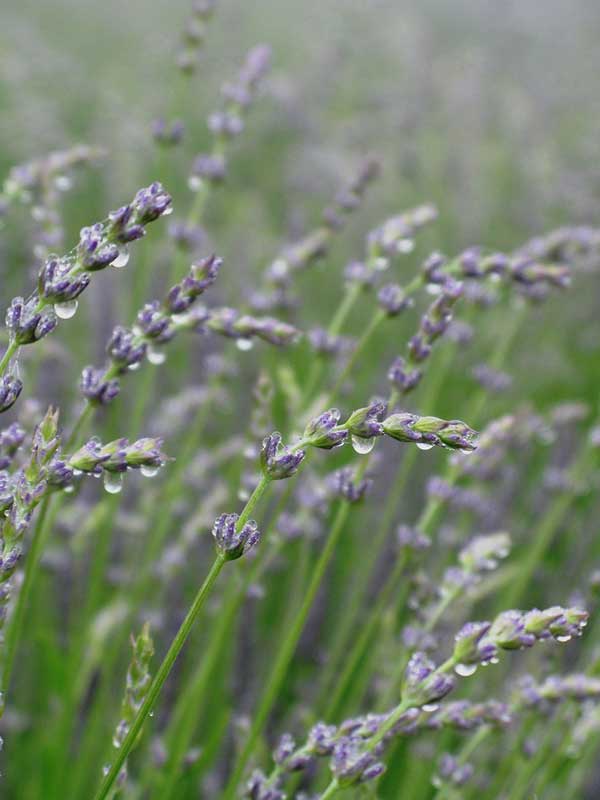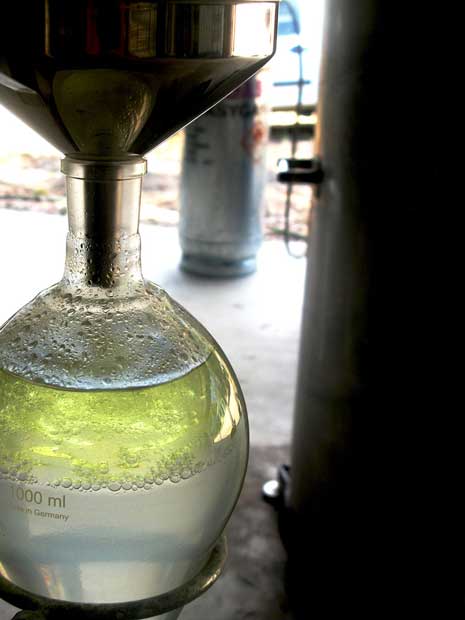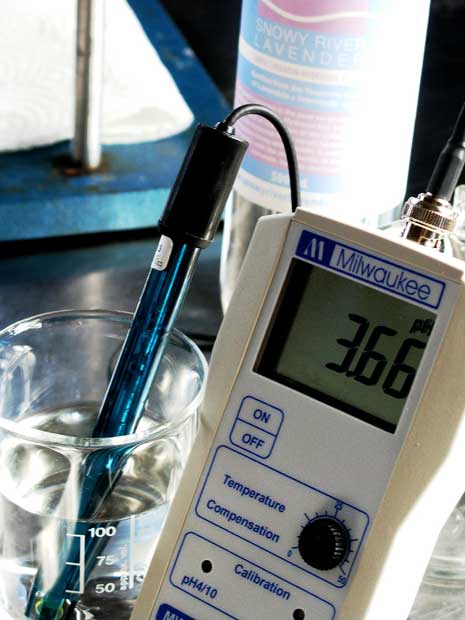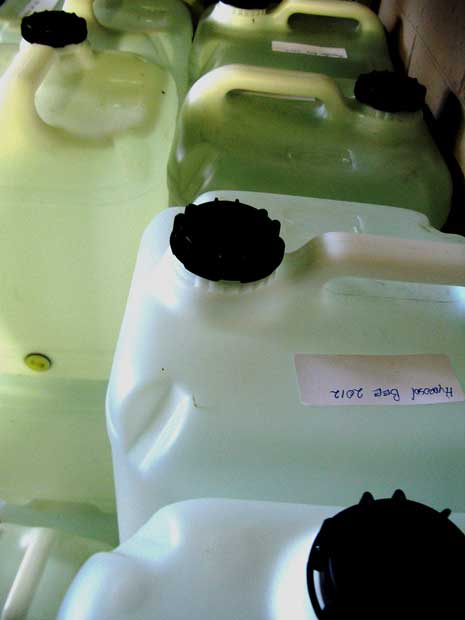

HYDROSOL – CRYSTAL CLEAR POWER
A bottle of lavender hydrosol has the appearance of crystal clear water and it is not until you smell the honey rich aroma that you are given a hint of the inherent potency contained within. Hydrosol is the pure co- product, with essential oil, of distillation processes. As distillate leaves the still’s condenser and settles in the collection vessel, the essential oil rises to the top, the hydrosol settles on the bottom, and the phyto- chemistry which was complete in the plant now becomes two separate products. Hydrosol has minuet residues of essential oil and of itself more of the soluble chemistry of the plant. It follows that hydrosol will have its own aroma and chemistry with its own unique value of use, therapeutically, cosmetically, and aesthetically.
ACIDITY: A KEY QUALITY INDICATOR OF HYDROSOL
Perhaps the most intriguing thing about hydrosol is the inherent acidity. Water with a neutral pH (7) enters the distillation chamber as steam and invariably the hydrosol, the aqueous component of distillate, emerges from the condenser acidic. While the specific pH of a hydrosol will vary according to the plant species distilled (2.5-6.5), some acidity relative to the native pH of the water source used for distillation is seen as a necessary and accessible index of quality.
Each hydrosol carries a specific chemistry akin, but not the same, to the essential oil with which it is co-distilled. Furthermore, as an aqueous solution the chemistry of a hydrosol is not concentrated, around 600 to 800 ppm, allowing it to be used undiluted. This subtle chemistry works with the inherent acidity making hydrosol a potent but safe substance to use with many, therapeutic and cosmetic benefits, among them anti-bacterial, pH balancing, astringent and antioxidant. Furthermore, as our skin’s acid mantle is important in the skins protection, hydrosol can play a part in maintaining this protection, both directly as a wash or mist and as a key ingredient in the formulation of aqueous skin and cleaning preparations.
The distillery at Snowy River Lavender produces lavender and lavandin hydrosol, consistently, with a pH between 3.1 and 4.5. Lavender hydrosol’s native acidity bestows it an effective self preserving system and when kept in cool and airtight conditions, should have a shelf life of well beyond two years. checking the hydrosols current pH against its pH at distillation is a good way of monitoring the quality and condition of a hydrosol. This is important also in maintaining the purity of the hydrosol as the most common form of adulterating hydrosol is to add water this reduces acidity and will also limit the life span of the hydrosol.
IMPORTANT PRODUCTION PROTOCOLS:
- Hydrosol is only collected while essential oil is still present in the distillate.
- Trajectory of hydrosol from the condenser to the storage cube is a fully enclosed process.
- pH is checked at regular intervals across the distillation as a means of maintaining maximum acidity. If a shift in the distillate water is detected, collection is ceased.
- pH is recorded at the end of each distillation. This pH reading is registered on the record sheet, the top of the storage cubes and also on the packaged hydrosol labels, along with the distillation vintage and best before date.
- All hydrosol is cellared (cool, dark and airtight) for 6 – 12 months to settle and integrate before being released for sale.
- All hydrosol sold as therapeutic/cosmetic products are released the year after distillation only. All older hydrosols are used for the manufacture of soaps and cleaning products.



